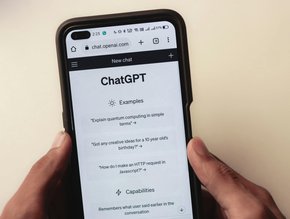Google is using AI to design faster and improved processors

Engineers at Google are now using artificial intelligence (AI) to design faster and more efficient processors, and then using its chip designs to develop the next generation of specialised computers that run the same type of AI algorithms.
Google designs its own computer chips rather than buying commercial products, this allows the company to optimise the chips to run its own software, but the process is time-consuming and expensive, usually taking two to three years to develop.
Floorplanning, a stage of chip design, involves taking the finalised circuit diagram of a new chip and arranging the components into an efficient layout for manufacturing. Although the functional design of the chip is complete at this point, the layout can have a huge impact on speed and power consumption.
Previously floorplanning has been a highly manual and time-consuming task, says Anna Goldie at Google. Teams would split larger chips into blocks and work on parts in parallel, fiddling around to find small refinements, she says.
Fast chip design
In a new paper, Googlers Azalia Mirhoseini and Anna Goldie, and their colleagues, describe a deep reinforcement-learning system that can create floorplans in under six hours.
They have created a convolutional neural network system that performs the macro block placement by itself within hours to achieve an optimal layout; the standard cells are automatically placed in the gaps by other software. This ML system should be able to produce an ideal floorplan far faster than humans at the controls. The neural network gradually improves its placement skills as it gains experience, according to the AI scientists.
In their paper, the Googlers said their neural network is "capable of generalising across chips — meaning that it can learn from experience to become both better and faster at placing new chips — allowing chip designers to be assisted by artificial agents with more experience than any human could ever gain."
Generating a floorplan can take less than a second using a pre-trained neural net, and with up to a few hours of fine-tuning the network, the software can match or beat a human at floorplan design, according to the paper, depending on which metric you use.
"Our method was used to design the next generation of Google’s artificial-intelligence accelerators, and has the potential to save thousands of hours of human effort for each new generation," the Googlers wrote. "Finally, we believe that more powerful AI-designed hardware will fuel advances in AI, creating a symbiotic relationship between the two fields.






